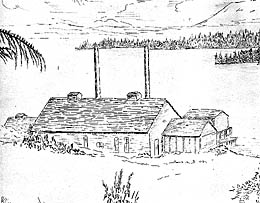In 1889, Prof. James Parkinson reports that waste discharges into Lake Washington threaten Seattle's drinking water supply. The report is ignored and the pumping plant at Holgate Street is expanded to pump 7,000,000 gallons a day. Mayor Robert Moran promises that the improvements "would last for generations."
Prof. Parkinson's report noted that without expensive machinery to pump sewage to the salt water of Elliott Bay, waste "surely would add year by year to contamination despite the utmost care exercised to prevent it."
Beginning in 1884, the Spring Hill Water Company pumped up to 2,000,000 gallons a day of fresh water from Lake Washington to Seattle. Water was stored in a reservoir on Beacon Hill. Steam driven pumps were powered by coal barged from Newcastle.
During the Great Fire of June 6, 1889, the privately owned system failed, so the city purchased the company for $350,000 and entered the public utility business. One of the city's first improvements was to increase the number of pumps to four and to place the intake in 30 feet of water.
In 1900, Seattle began drawing water from the Cedar River. In 1967, communities around Lake Washington stopped discharging treated sewage into the lake and began sending it to treatment plants in Renton and at West Point for discharge into Puget Sound.

